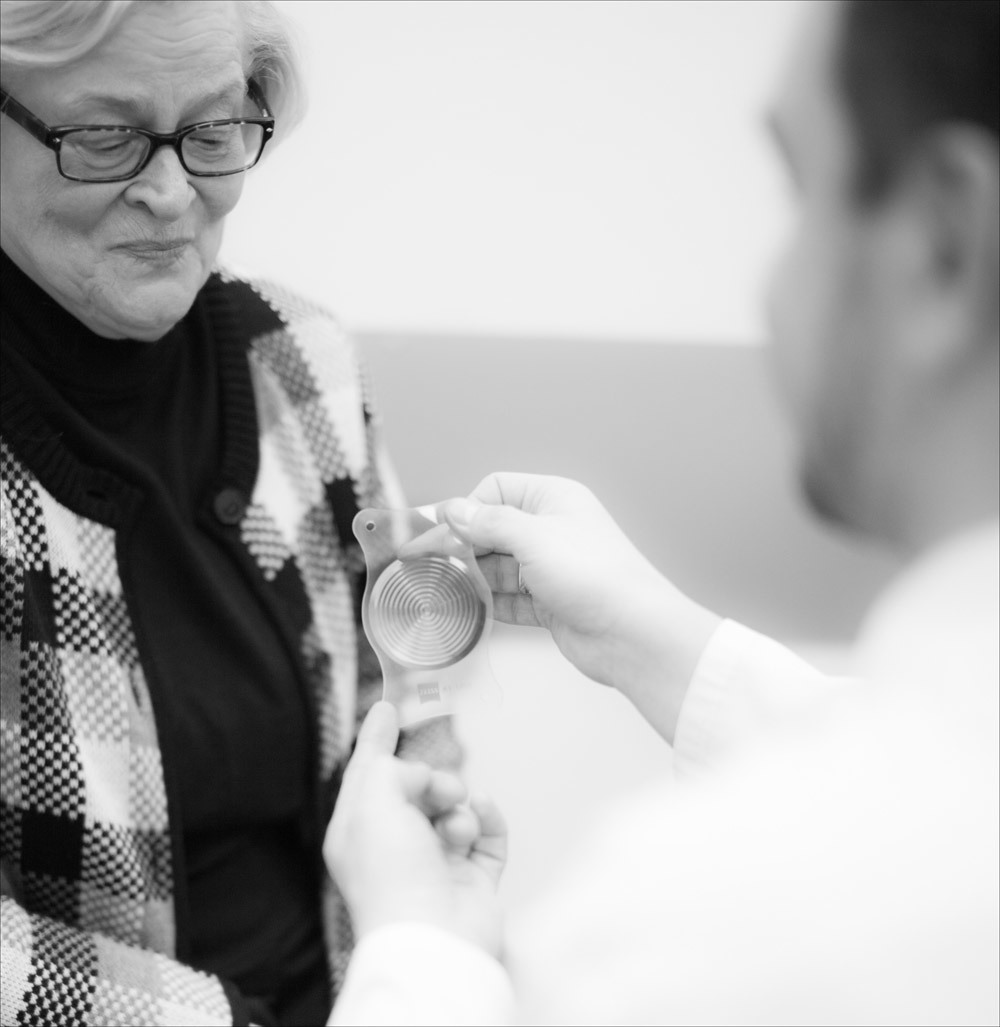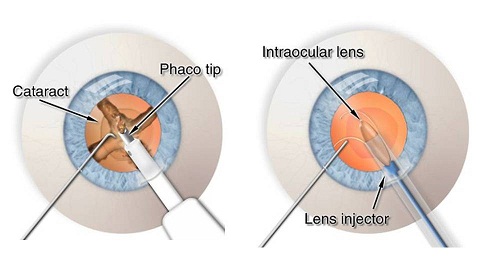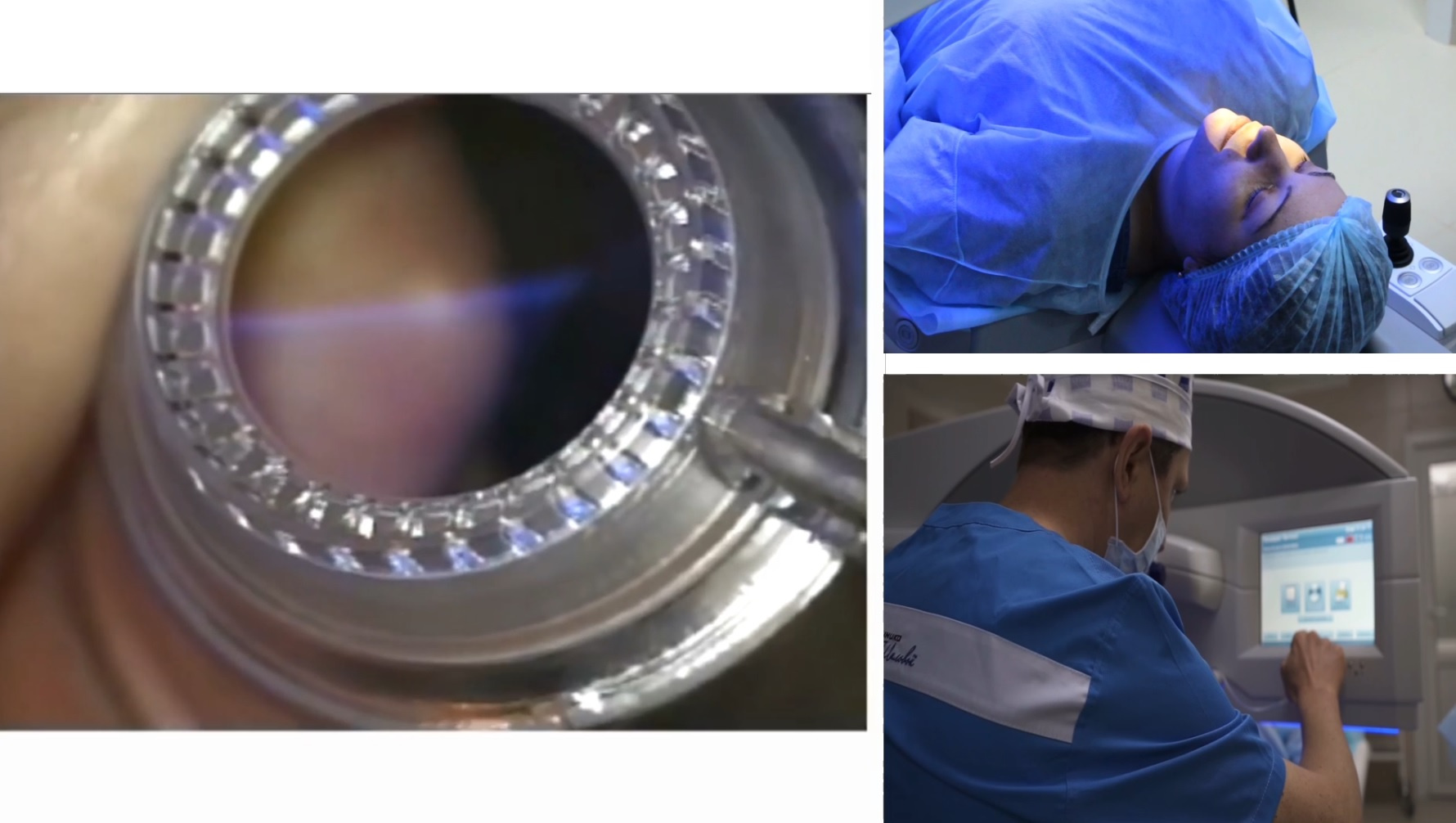
This is a model of an intraocular multifocal lens from Carl Zeiss. The real size of such a lens is 11 millimeters, the diameter of the optical zone is 6 mm.
The cataract is, simplifying, age opacification and consolidation of a crystalline lens. According to the classical definition, we are talking about the turbidity of any type. First, something gets in the field of view, a general “fog” appears, you want to wipe dirty glasses, then you do not see the letters in the book, then you want to turn on the light brighter or, on the contrary, you hide from the bright light, and then wake up one fine morning and understand that you can not find slippers. And you see nothing at all — only the shadows. This process sometimes stretches for many years, but slippers are still lost. Mention of clouding that develops in the eyeball, there are still thousands of years before our era.
The treatment procedure has historically been very peculiar — reclination of a cloudy lens. The doctor took the patient with a very dense lens — to that dense stage that the patient is already blind. During the excavations of the settlements of ancient Greece and Rome, the tools used by doctors to remove cataracts were found — sharp needles that pierced the eye and lens, destroying its supporting apparatus. The lens could come off and, by virtue of its gravity, could also fall down from hitting the back of the head with a heavy stick several times. Sometimes the patient died during the emergency eye care, sometimes he had a concussion, and sometimes the lens fell off the ligaments and flew deep into the eye. The patient began to see again — he had a huge lump and vision of about +10 +15 diopters.
Now two news. The bad — people began to live to cataracts more often, and it is inevitable. Good — we have something better than sharp needles and a heavy stick.

